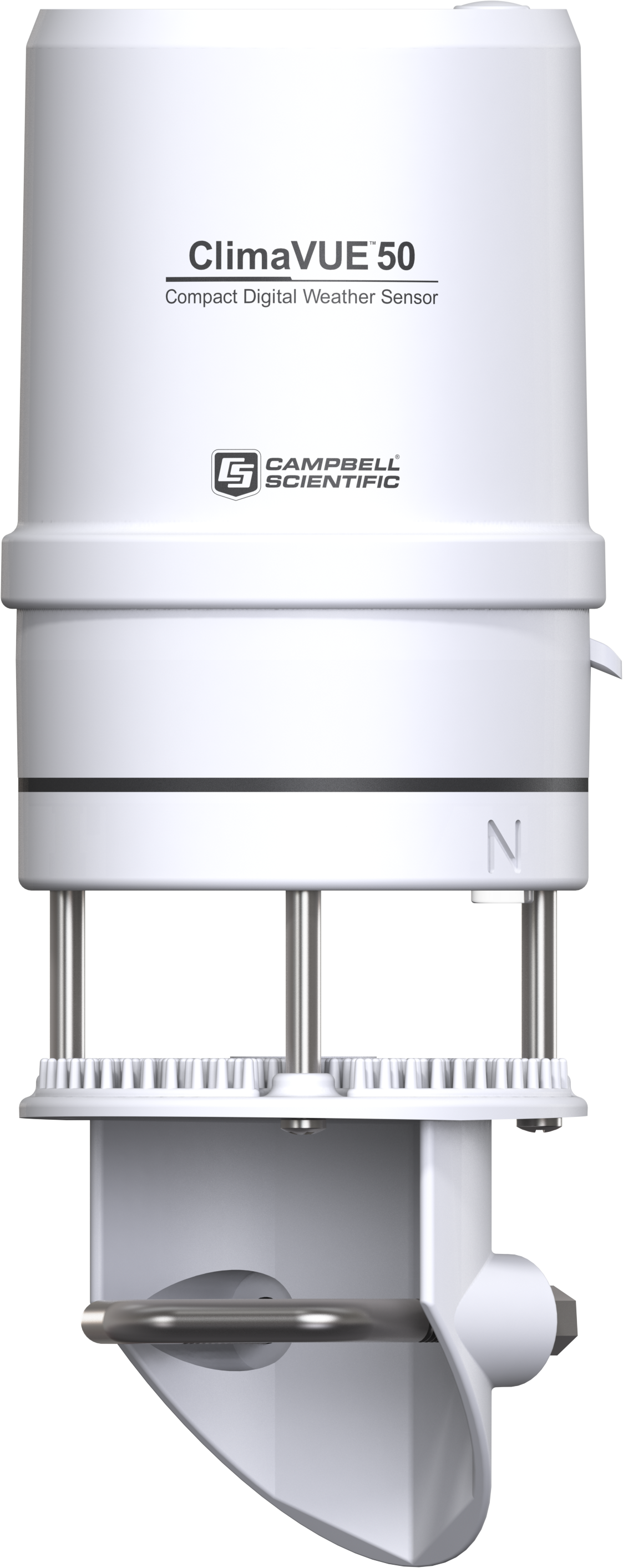Description
Description:
All sensors are integrated into a single, small form factor unit, requiring minimal installation effort. With a robust design with no moving parts that prevents failure due to wear or contamination, the ClimaVUE™50 is ideal for long-term, remote installations.
Pyranometer
Global solar radiation is measured with a pyranometer integrated into the lip of the rain gauge funnel. The miniature pyranometer uses a silicon sensor to measure global solar radiation (direct and diffuse solar radiation). Silicon cell sensors have excellent response time to changing radiation conditions and acceptable sensitivity across the entire solar spectrum, making them well suited for use on the ClimaVUE™50.
A carefully designed cosine-corrected sensor head ensures accurate measurements regardless of the sun's angle, while the optical filter material strikes a balance between cost and performance to ensure the silicon cell delivers good accuracy to the ClimaVUE™50 regardless of temperature or sensor age.
anemometer
In the space below the rain gauge, the ClimaVUE™50 measures wind speed. Ultrasonic signals emitted by the transducers at right angles to each other bounce off the porous sintered glass plate and return to the opposite sensor. The speed of sound is influenced by the wind, and wind speed is calculated by measuring the differences in the time it takes for the sound to travel from the transmitters to the receivers.
Temperature sensor
The ClimaVUE™50 temperature measurement occurs in the center of the anemometer section, where a small stainless steel needle with a tiny temperature sensor (thermistor) extends from the center of the four transducers in the center of the anemometer.
Unlike most air temperature measurements, the temperature sensor is not covered with louvers to protect it from solar radiation. Instead, it sits outdoors and is vulnerable to solar heating of the instrument body. However, the ClimaVUE™50 accurately corrects the measured air temperature because solar radiation and wind speed are known. These two are the main variables that determine the error between the measured air temperature and the actual air temperature. An energy balance equation is then used to calculate the actual temperature with an accuracy of ±0.6°C.
For more information, see the technical publication "ClimaVUE™50 Correction of Air Temperature Measurements from a Radiation-Exposed Sensor."
Relative humidity sensor
The relative humidity sensor on the ClimaVUE™50 is located behind the circular Teflon™ screen near the transducers. The Teflon screen protects the sensor from liquid water and dust, while allowing water vapor to freely pass through to the sensor. The ClimaVUE™50 measures relative humidity and temperature and calculates vapor pressure.
Drop counter rain gauge
The ClimaVUE™50 includes a 9.31 cm (3.67 in) diameter rain collection funnel. A spring in the funnel acts as a filter to keep out large particles while allowing enough flow to prevent water from pooling. The rain collected by the funnel exits the funnel through a precise, flared hole that forms the rain into droplets of a known size. The falling droplets strike and momentarily bridge the gap between two gold pins, generating an electrical pulse.
The ClimaVUE™50 counts the pulses (droplets) and calculates the water volume. As rain intensity increases, the droplets become smaller, but the ClimaVUE™50 firmware includes an algorithm to automatically compensate for droplet size as rain increases.
Note: This non-heated sensor is not suitable for measuring solid precipitation or in peripheral areas.
Tilt sensor
The ClimaVUE™50 is also equipped with a tilt sensor. The tilt sensor's data is primarily used to ensure the ClimaVUE™50 remains level at all times. Regularly check the X and Y tilt data to ensure the ClimaVUE™50 is level; if it is tilted, return to the site and re-level it. A deviation of three degrees from level can cause errors in rain and solar radiation measurements. While this sensor's readings can be used to level the device during installation, it is much easier to use the small bubble level on the underside of the anemometer plate.
Assembly
The ClimaVUE™50 includes a V-bolt for mounting on a pipe with a nominal outside diameter of 31.8 to 50.8 mm (1.25 to 2.0 in.). This allows the sensor to be mounted directly to a tripod mast or CM300 Series mounting pole, or to a truss using the 17387 mounting pole kit.

